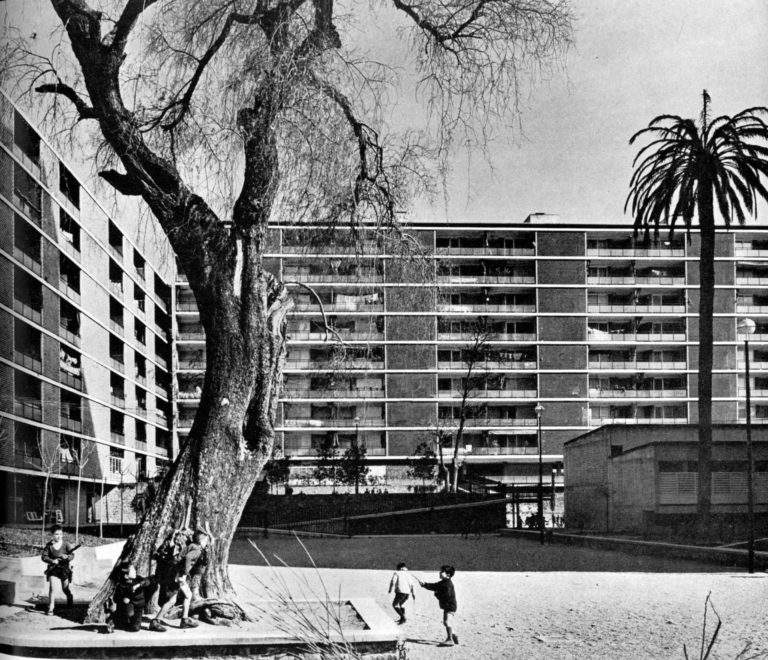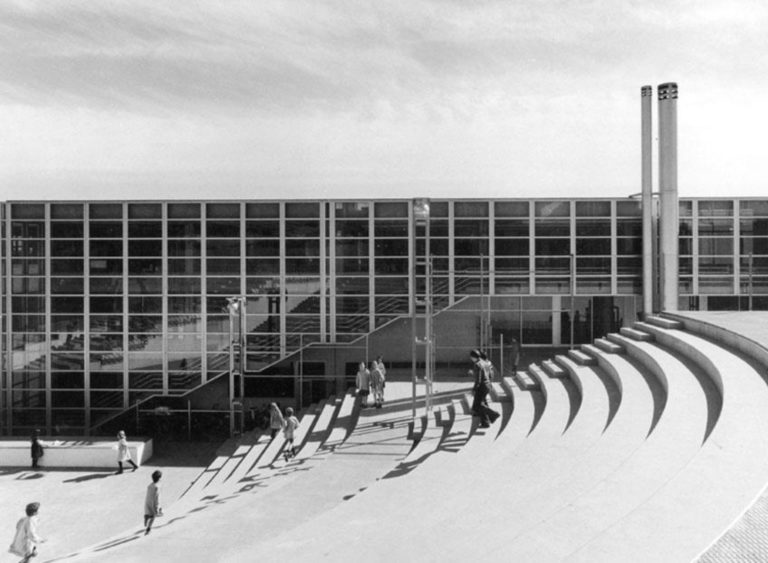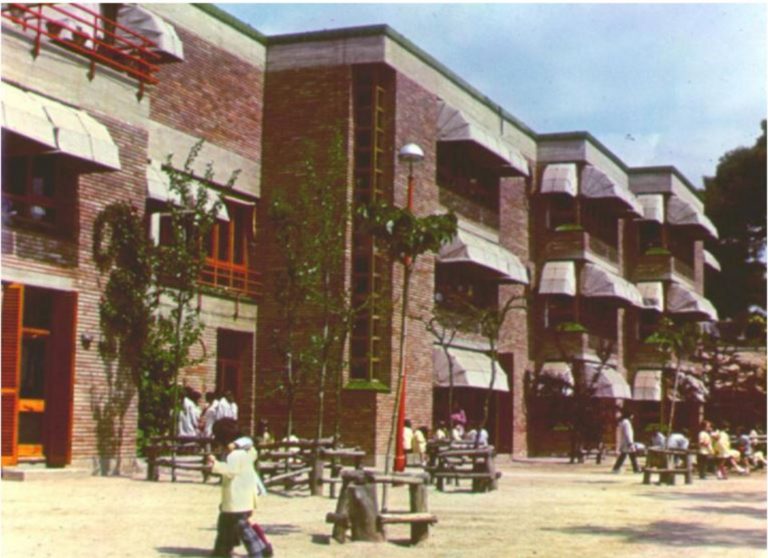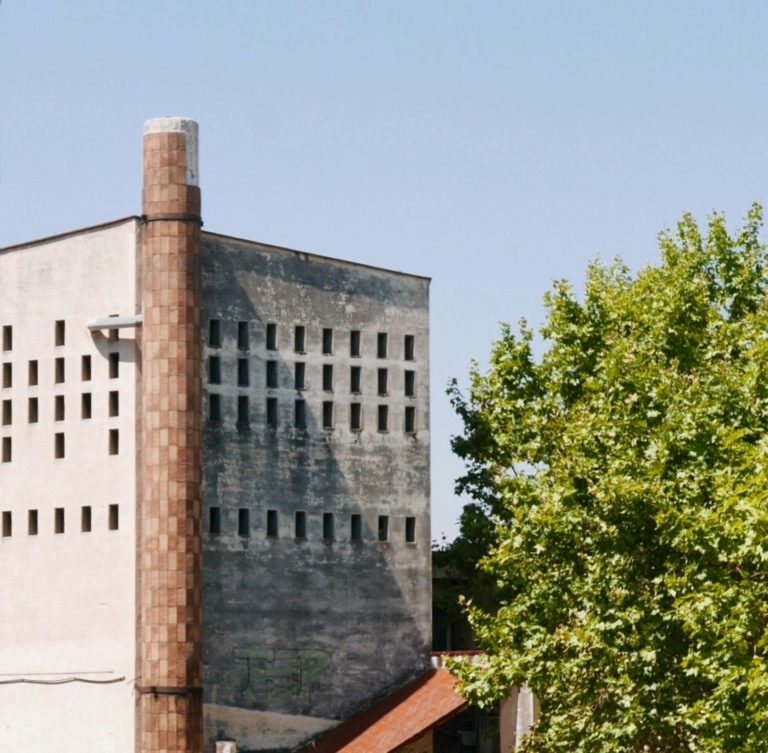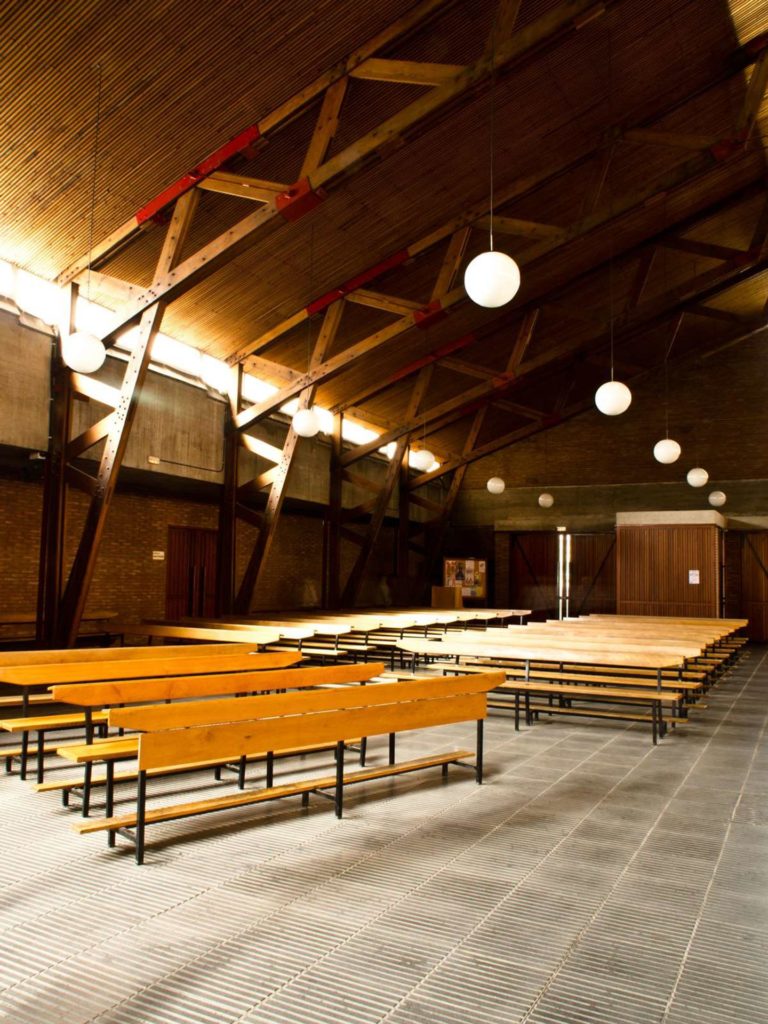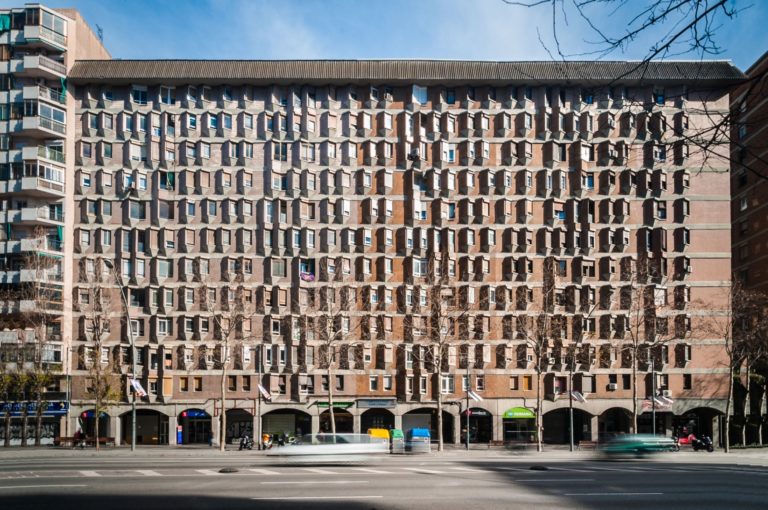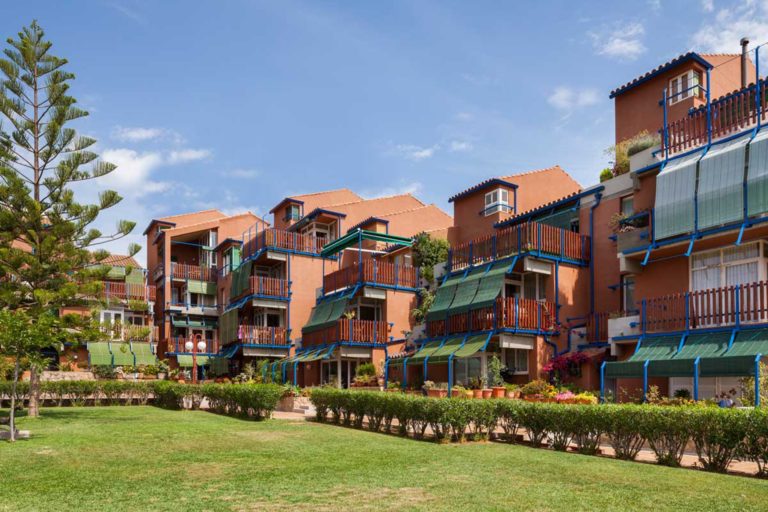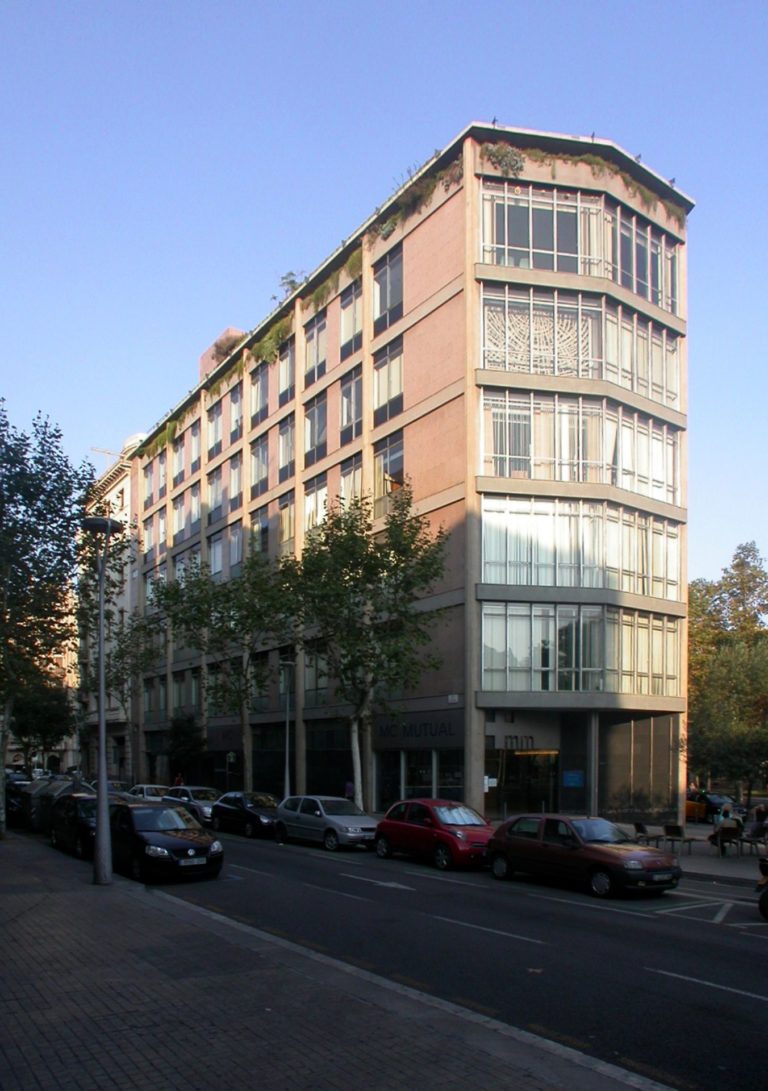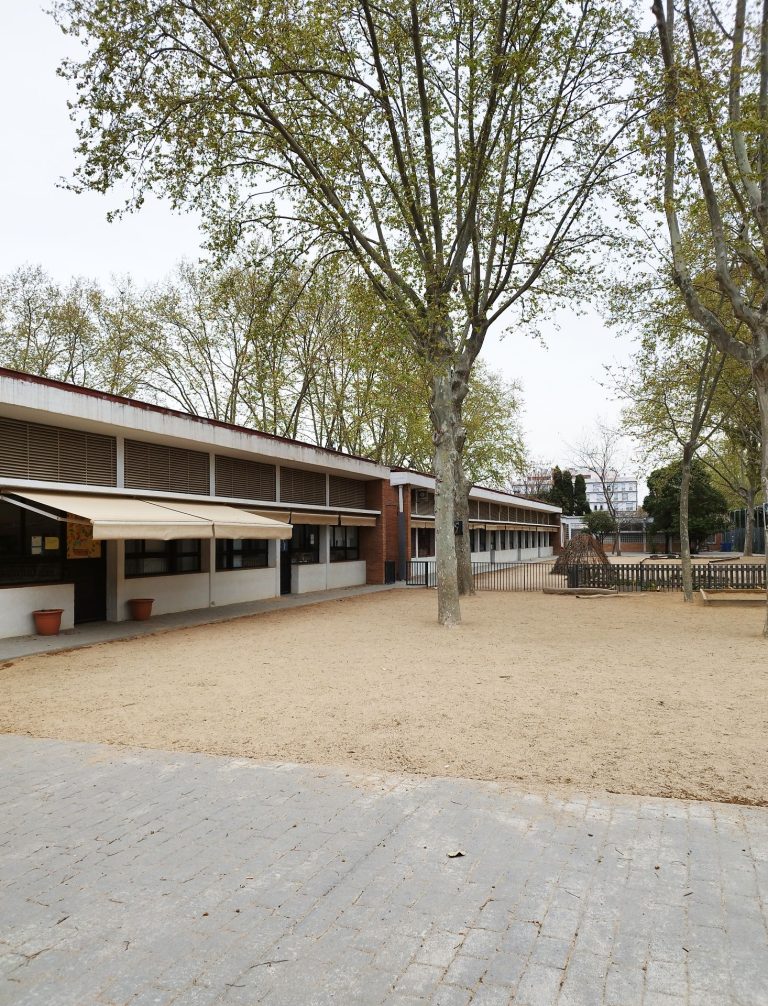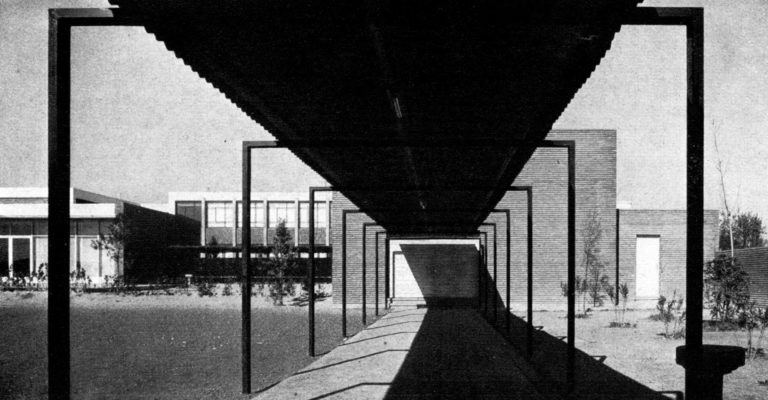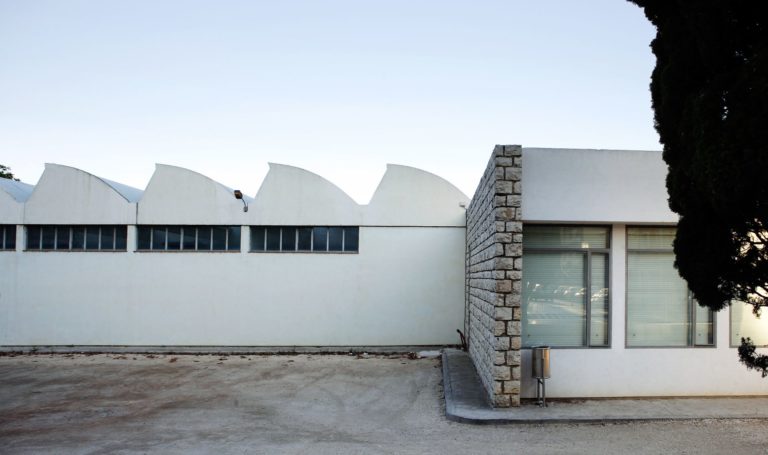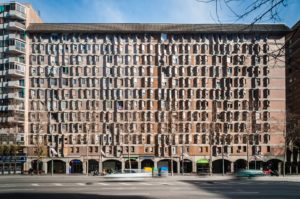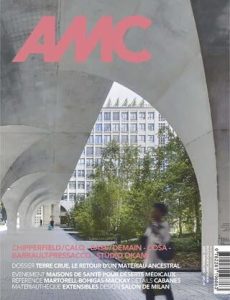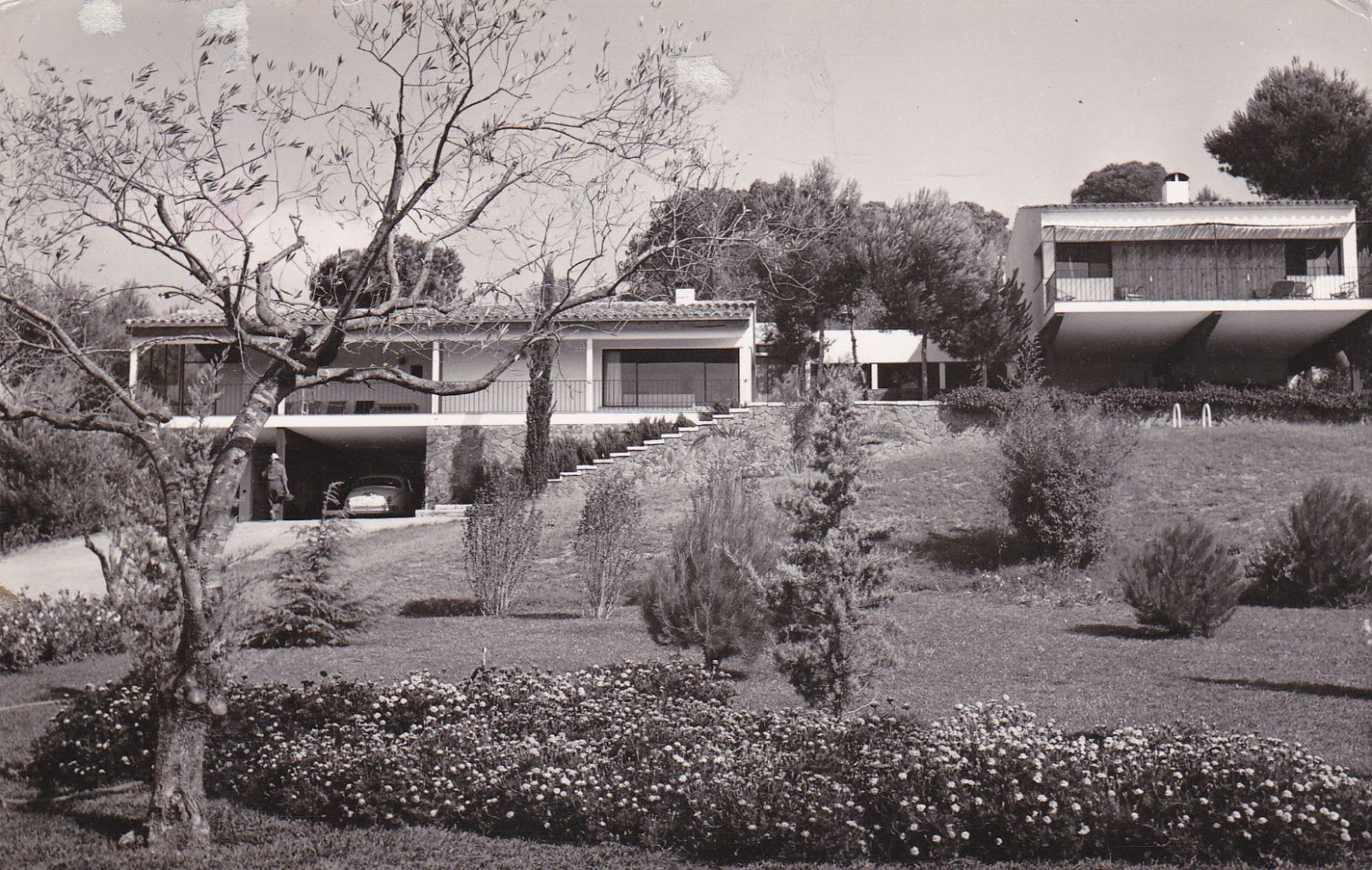Oriol Bohigas Guardiola
Barcelona, 1925-2021
Born into a progressive family with close ties to the art world, Oriol Bohigas’s father was technical secretary for the Museum of Art of Catalonia, predecessor of the current National Museum (MNAC). From his father, he inherited both his interest in art and his social engagement and commitment to the Catalan cause. Bohigas’s years in primary school coincided with the Republic and, at the end of the Civil War, he entered the Barcelona School of Architecture where he earned a degree with a specialty in urban planning that he would later complement with a PhD in architecture.
Immediately after finishing his studies, in 1951, he partnered with Josep Maria Martorell. During the 1950s, Bohigas and Martorell were founding members, along with a number of other architects, of Grup R, which intended to reclaim the postulates of architectural rationalism interrupted by the Spanish Civil War. The rationalism promoted by Grup R was characterized by a critical approach to the principles established by the modern movement, recovering local and traditionalist accents in a manner similar to what was happening in other international contexts, especially in Italy. In their own work, Bohigas and Martorell remained consistent with these principles: in a context of crisis and scarcity, they placed special importance on constructive rationality and an economy of materials, recovering artisanal construction methods. During these early years, their designs were mainly residential, combining large single-family homes – many of them holiday homes – with social housing blocks like the ones on carrer Pallars and Avinguda Meridiana, or the Casa del Pati, all in Barcelona.
In 1962, the British architect David Mackay joined the studio as a partner, and they took the name MBM arquitectes. With the incorporation of Mackay, the studio became even more connected with different international currents, aiming to moving away from the drab cultural climate of the Franco regime and with the intention of reconnecting Catalan architecture with the avant-garde. Bohigas strengthened his personal connections with international architects, especially in Italy, where architecture was undergoing a moment of ebullience in the reconstruction after the Second World War. Italian neorealism and the gradual recovery of elements of “architectural language” gave Bohigas a context for defining a local current, which he called the Barcelona School. The group – the members and attributes of which Bohigas himself defined – was made up of architects who, without subscribing to an official manifesto, demonstrated shared interests and whose work offered the vision of a certain coherent style. The style, according to Bohigas, was marked by characteristics that also defined the architecture of a group of Milanese architects of the same time, such as Ernesto Rogers and Ignazio Gardella.
In the late 1960s, MBM’s work already had a clear presence in the Barcelona area; it was notable across many typologies, but especially in the field of education, with examples like the Garbí and Thau schools. The studio took advantage of its international projection to begin its first projects abroad.
Beyond his work in the studio, Oriol Bohigas was known for his activism in combatting the Franco regime, emerging as a prominent figure in Barcelona’s public and cultural life. He was associated with the gauche divine, through his ties to a group of creative, left-wing young people who were at the centre of some of Barcelona’s social circles during the 1960s and early 1970s. As can be seen from the many books and essays he published, he made a relevant intellectual contribution in many fields. As Rafael Moneo stated in a posthumous tribute, only through his “generosity and intelligence can we explain the large number of intellectual adventures that he led or to which he belonged”; he was always remarkable for his role as “a natural leader” and for his “awareness of being part of a society that was strongly identified with its country”. One of these contributions involved his efforts to recover the memory and prestige of Catalan modernism, which had been discounted for years in intellectual circles and the legacy of which was being lost. This work to raise awareness and disseminate knowledge was carried out through publications, exhibitions and, especially, from the Barcelona School of Architecture, where he held several professorships beginning in 1977 and eventually served as the dean. He was also a founder and director of the publishing house Edicions 62 and the design studio IDP, as well as a promoter and president of the Fundació Joan Miró and the Ateneu Barcelonès, among other companies and institutions.
With the advent of democracy, Bohigas’s leadership role in civil society and his prestige as an architect and urban planner were immediately recognized with important political appointments from the new socialist administration in the Barcelona City Council. His role as urban ideologue was key at a time when Barcelona was gearing up for a necessary update after decades of erratic urban planning and failed public leadership. Bohigas’s vision was implemented emphatically: tit involved recovering the city’s relationship with the sea, monumentalizing the periphery, and cleaning up the historic centre. With the city’s designation as host of the ’92 Olympics, its capacity for transformation increased exponentially, and Bohigas’s successive political roles in the City Council, with a growing degree of responsibility, set him up as one of the key people to push the transformation through. The mark he left on the city is not limited to the theoretical sphere; from his studio, he was the author of concrete interventions, the most relevant related to the renovation of the seafront: the recovery of the Moll de la Fusta, Passeig Colom and the old port (Port Vell), the project for the Olympic Port, and the urban planning for the Olympic Village.
MBM arquitectes has engaged in intensive construction activity over its 45 years of existence, authoring more than 500 designs. In later days, in addition to important public projects in Catalonia, the international presence of the studio was strengthened with major projects in Berlin and Argentina. The studio has remained active well into the 21st century, with built work that has a significant presence in the urban landscape of Barcelona such as the Design Museum (dHUB) in Plaça de les Glòries or the new police station in Plaça Espanya.
Oriol Bohigas died in 2021, considered one of the most relevant personalities in late 20th-century Catalan architecture for his role as an architect and an urban planner, as well as an essential figure in the cultural, academic, and political panorama of the late 20th century. In contemporary Catalonia, it is hard to find someone who could equal the impressive list of recognitions and honorary posts that he amassed.
Biography by Roger Subirà
Bibliography
- BOHIGAS, Oriol, Elogi de la Modernitat, Arcadia Atmarcadia, Barcelona, 2015.
- AAVV, MBM Arquitectes 1993-2006, RBA Libros, Barcelona, 2006.
- BOHIGAS, Oriol, Epistolario 1951-1994, Colegio Oficial de Aparejadores y Arquitectos Técnicos de Murcia, Murcia, 2005.
- BOHIGAS, Oriol, Modernidad en la arquitectura de la España Republicana, Tusquets Editores, Barcelona, 1998.
- NANNERINI, Giuseppe, dir., L’Industria delle Costruzioni 293, Revista Tecnica dell’Ance, Roma, marzo 1996.
- DREW, Philip, La arquitectura de Martorell, Bohigas, Mackay, Puigdomenech MBM, Editorial GG, Barcelona, 1993.
- BOHIGAS, Oriol, , Edicions 62, Barcelona, 1992.
- BOHIGAS, Oriol, Arquitectos 119, Oriol Bohigas memorias, Consejo Superior de los Colegios de Arquitectos de España, Madrid, 1990.
- MARTORELL, Josep, BOHIGAS, Oriol, MACKAY, David, Documentos de Arquitectura 9 La Manzana, Delegación de Almería del Colegio Oficial de Arquitectos de Andalucía Oriental, Almería, junio de 1989.
- LLOPIS, Carme, dir., AMBRÓS, Jordi, ed., ON Diseño 141, ARAM Ediciones S.A., Barcelona, 1978.
- FULLAONDO, Juan Daniel, B.M. Arquitectura 1951-1972. J. Martorrel. O. Bohigas. D. Mackay, Alfaguara, Madrid, 1974.
- BOHIGAS, Oriol, Reseña y catálogo de la arquitectura modernista, Lumen, Madrid, 1974.
